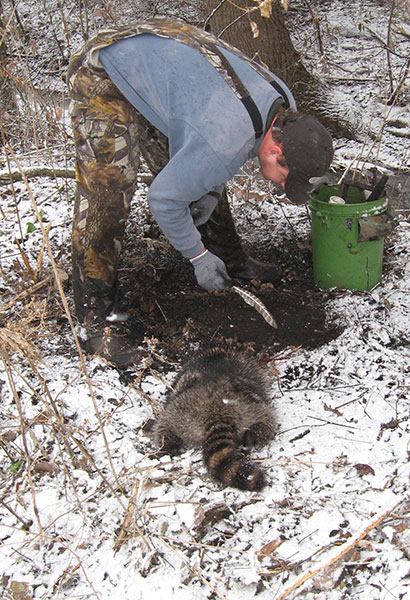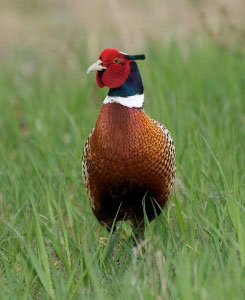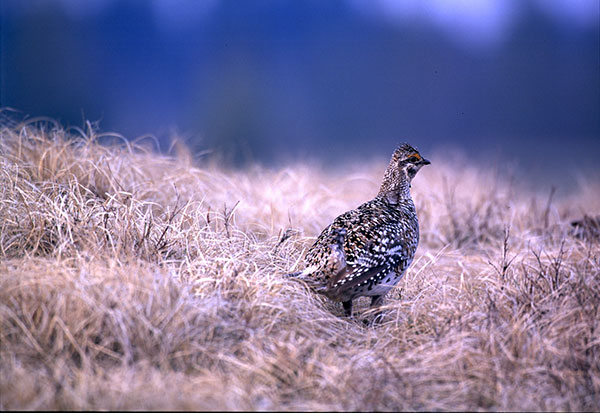- Details
MDNR Report
While you might be thinking about your next visit to the beach right now, with bird hunting season just around the corner, it's a great time to plan your fall hunting trip.
"Preseason planning for your fall bird hunt can really pay off," said Michigan Department of Natural Resources upland game bird specialist Al Stewart. "Michigan has millions of acres of huntable public land with excellent young forests that have made northern Michigan a destination for many."
You can find tools to get started on planning your fall bird hunting trip right on your mobile device. GEMS and Mi-HUNT are twoDNR-developed programs to help you build a public-land hunting itinerary.
Nineteen GEMS (Grouse Enhanced Management Sites) in the northern Lower Peninsula and Upper Peninsula will be available to explore this fall. GEMS are large blocks of land managed for young forests, with winding hunter walking trails that provide added comfort to those unfamiliar with an area or those with mobility challenges.
- Details
By BOB GWIZDZ, MDNR Report
 Michigan’s Trapping Tradition, a Challenging, Time-Honored Pursuit
Michigan’s Trapping Tradition, a Challenging, Time-Honored Pursuit
Anyone who has spent much time in Michigan knows that hunting and fishing have always played major roles in the states heritage. Michigan is, and has long been, known nationally for the quality of its outdoor recreation.
But one natural resources-based recreation coterie, which garners very little attention, is quick to point out that its members pastime is at least equally as important if not more so as anyone else's in Michigan history: trappers.
Trappers are the invisible men and women of outdoor recreation. You don't see them in blaze orange or towing metal flake-finished boats to the lake. But they are out there; often daily, participating in a pastime that brought a lot of folks to this part of the country in the first place.
The city of Sault Ste. Marie was founded as a fur-trading post, the first in Michigan, said Dale Hendershot, a 67-year-old retired diesel mechanic and past president of the Michigan Trappers and Predator Callers Association. Michigan trappers settled our state - they were the first ones in here, paving the way for others to come.
Trappers have certainly played a big role in Michigan history.
- Details
MDNR Report
 Grasslands Are Great Michigan Pheasant Attraction Ring-necked pheasants are beautiful birds, with their rainbow of feather colors and impossibly long tails. Since their introduction to Michigan in 1895, they have offered delightful views to those lucky enough to spot them.
Grasslands Are Great Michigan Pheasant Attraction Ring-necked pheasants are beautiful birds, with their rainbow of feather colors and impossibly long tails. Since their introduction to Michigan in 1895, they have offered delightful views to those lucky enough to spot them.
Pheasants are omnivores, feeding on insects, seeds, grains, corn kernels and buds. They nest on the ground among low grasses, and females lay 10-12 olive-buff-colored eggs per year. After about three to four weeks, the eggs hatch and the speckled young pheasants can follow their mother around shortly after hatching.
Pheasants use grassland habitat in just about every season of the year. Optimal pheasant habitat must include a combination of grasslands, idle fields, wetlands, croplands, haylands and shrublands. Undisturbed low- to medium-high grasses and legumes are vital for nesting and brood-rearing habitat. Wetlands, windbreaks and dense covers of cattails or switchgrass protect the birds from heavy snow and cold winds in the winter. Fields of grain and weeds provide a consistent winter food supply.
- Details
By BOB GWIZDZ - Michigan DNR
 Michigan’s Sharp-Tail Grouse Offer Unique Hunting Opportunity
Michigan’s Sharp-Tail Grouse Offer Unique Hunting Opportunity
Mention grouse to most Michiganders and they immediately assume you're talking about ruffed grouse, game birds that thrive in early successional forests - think aspen - and provide much of the romance in upland bird-hunting lore.
But there's another grouse in Michigan that is far less numerous and widespread and is pursued by far fewer hunters. Sharp-tailed grouse are prairie birds, inhabiting grasslands and the neighboring brush, found only in the Upper Peninsula, and mostly on the east end.
While only a relative handful of sportsmen hunt them, they offer a unique upland opportunity to Michigan bird hunters. Michigan also has spruce grouse, which are not hunted.
Sharp-tailed grouse (commonly called sharptails, sharpies or sharps) are mottled brown, tan and white birds that get their name from the shape of their primary tail feathers.
They average about 20 inches in length and weigh in at around 2 pounds when mature. They are common in the western United States and Canada, but are much less so here in Michigan.
"Michigan is the furthest east state where you can hunt sharptails, said Al Stewart," the upland game bird specialist with the Michigan DNR. "We work with a variety of partners - soil conservation districts, private landowners, and the Michigan Sharp-tailed Grouse Association - to maintain sharptail habitat and sharptails so we can maintain a hunting season in this state."
- Details
(IDNR report)
Reservations for put-and-take pheasant hunts on DNR properties will be accepted from 5 a.m. on Sept. 1 until midnight on Nov. 25.
The change in start time allows DNR staff to be available when customers are online reserving hunts. This allows DNR staff to give real-time customer service if hunters have questions or problems with the process.
Put-and-take hunting reservations are selected on a first-come, first-served basis. All hunting days will start on a Saturday in mid- to late November.




